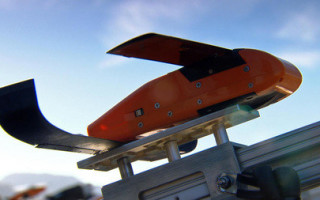DoD demonstrates large autonomous microdrone swarm
NewsJanuary 10, 2017

WASHINGTON. The Department of Defense (DoD), in partnership with the Strategic Capabilities Office (SOC) and Naval Air Systems Command, has successfully demonstrated one of the world?s largest microdrone swarms, which showed advanced swarm behaviors such as collective decisionmaking, adaptive formation flying, and self-healing.
The test -- conducted in October 2016 at a naval air station in China Lake, California, and revealed recently on the CBS News program “60 Minutes" -- consisted of 103 Perdix drones launched from three F/A-18 Super Hornets. The demonstration is one of the first examples of the Pentagon using teams of small, inexpensive, autonomous systems to perform missions previously undertaken by large, expensive systems.
SCO director William Roper pointed out that the department’s conception of the future battle network is one, while autonomous vehicles will certainly be used, where humans will always be in the loop. “Due to the complex nature of combat, Perdix are not preprogrammed synchronized individuals, they are a collective organism, sharing one distributed brain for decisionmaking and adapting to each other like swarms in nature,” Roper said. “Because every Perdix communicates and collaborates with every other Perdix, the swarm has no leader and can gracefully adapt to drones entering or exiting the team.”
The Perdix drone was originally designed by engineering students at the Massachusetts Institute of Technology (MIT); the concept was subsequently modified for military use by the scientists and engineers of MIT Lincoln Laboratory. The software and hardware for Perdix has been continually updated in successive design generations. Now in its sixth generation, October's test confirmed the reliability of the current all-commercial-component design under potentially harsh deployment conditions.






